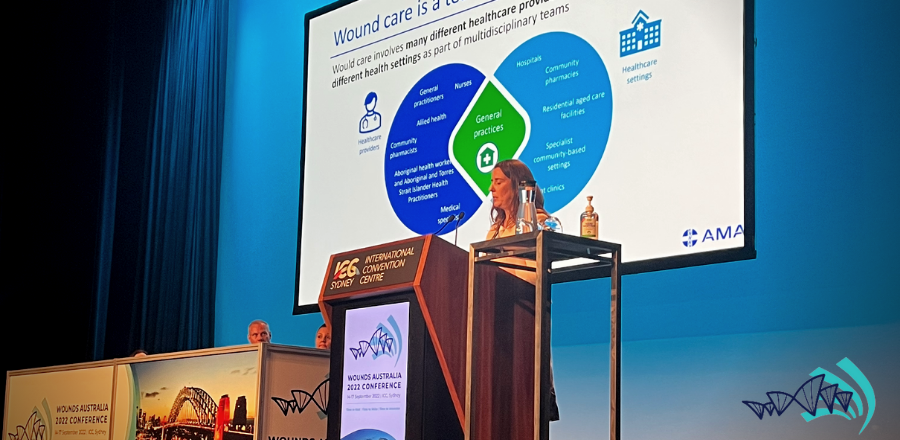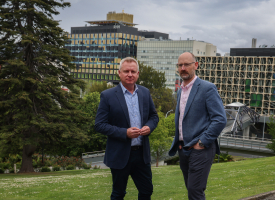Bandaid solutions to wound care don’t stick — Conference hears AMA’s plan for chronic wound management
AMA Vice President Dr Danielle McMullen was one of the keynote speakers at the Wounds Australia 2022 Conference in Sydney on Wednesday and outlined the AMA’s five-point plan.

AMA Vice President Dr Danielle McMullen was one of the keynote speakers at the Wounds Australia 2022 Conference in Sydney on Wednesday and outlined the AMA’s five-point plan.
AMA Vice President, Dr Danielle McMullen told the conference the AMA had been advocating for general practice to be better supported to deliver evidence-based wound care for many years.
The AMA launched a research report during Wounds Awareness Week with proposed solutions, including how much they would cost to implement and how much money could be saved.
The report detailed the AMA’s five-point plan to improve the delivery of evidence-based wound care in general practice:
- A funded wound consumables scheme to subsidise the cost of wound dressings and other consumables (for diabetic foot ulcers, arterial leg ulcers, and venous leg ulcers). This will remove the cost barrier to accessing evidence-based wound care products and reduce the financial strain on patients and general practice.
- The implementation of a stepped model of care for the management of chronic wounds, with general practices better supported to employ other healthcare professionals to form multidisciplinary teams.
- The creation of new wound-specific Medicare items, linked to education and training, to facilitate the stepped model of care.
- Implementation of a national education and training program for the management of chronic wounds, to reduce the duplication and silos within the sector.
- Improved coordination of wound care initiatives under a national program, to reduce duplication of effort.
Dr McMullen said the solutions built on recommendations in the government’s review of Medicare and with the AMA estimating the cost of the wound consumables scheme and new Medicare items would be $23.4 million over four years — a small cost compared to the savings made.
“This is a huge return on investment — $8.68 for every $1 invested,” and would save the health system $203.4 million over four years, Dr McMullen told the conference.



